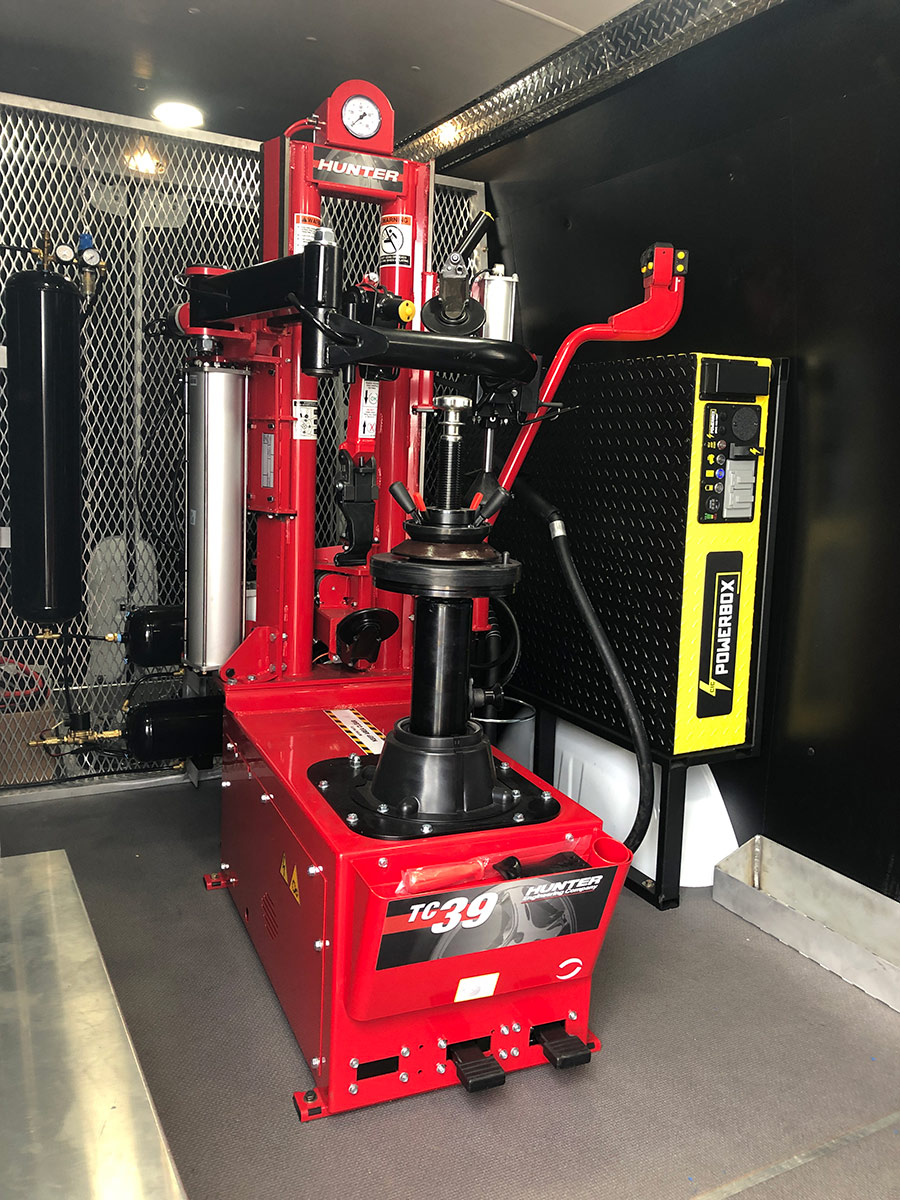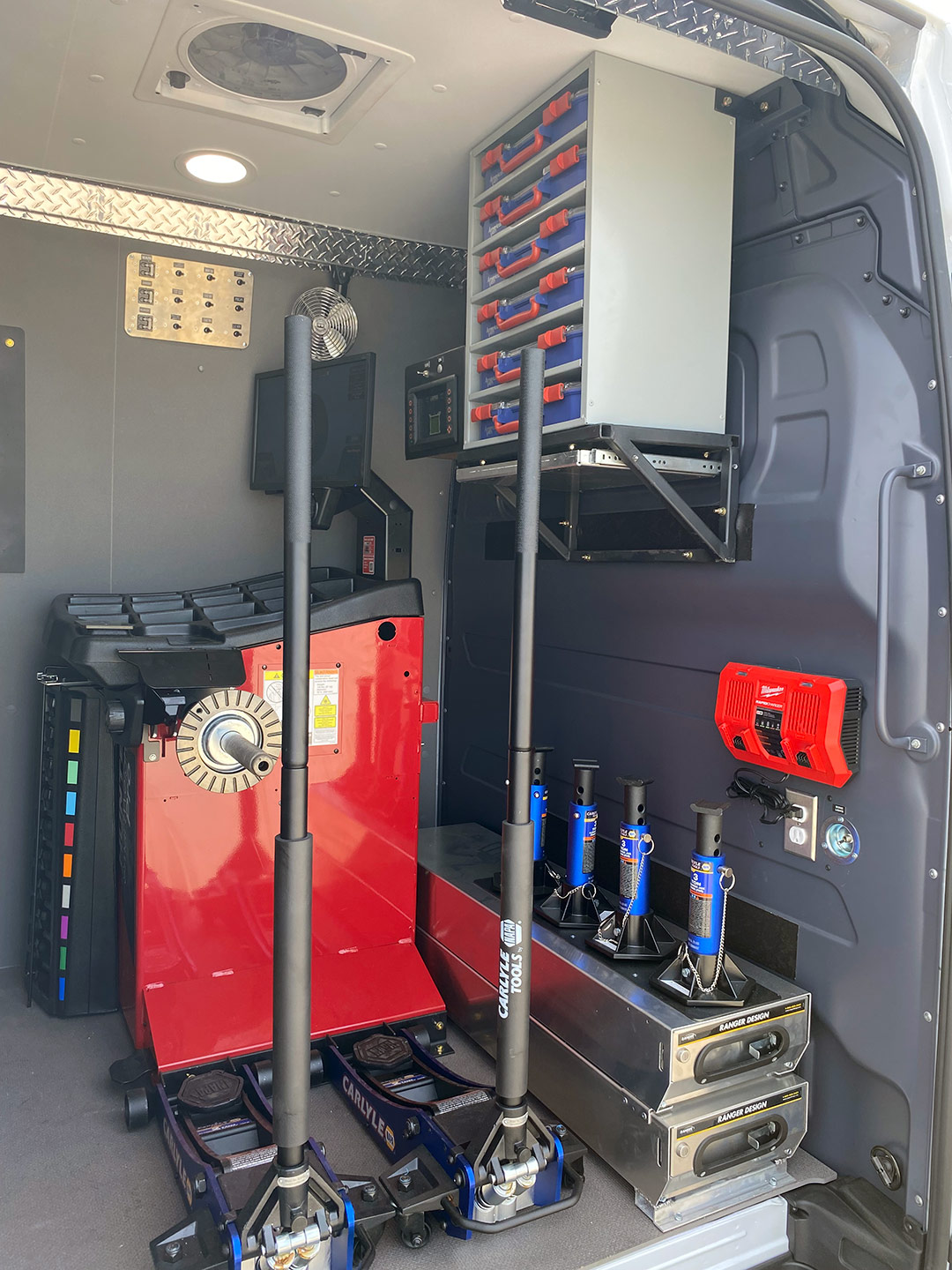Tire Service: Proven Approaches for Ideal Tire Maintenance and Treatment
From guaranteeing appropriate tire stress to regular rotation and positioning, there are tested approaches that can dramatically prolong the life-span of your tires and boost total driving experience. Allow's dive right into the globe of tire solution and uncover the tricks to maintaining your tires in top-notch shape for the long haul - Mobile Tire Replacement Las Vegas.
Value of Tire Stress
Appropriate tire stress is a crucial variable in guaranteeing ideal car performance and security when driving. Keeping the advised tire stress degrees provided by the maker uses many benefits. Appropriate tire pressure promotes better fuel effectiveness, as under-inflated tires can lead to enhanced rolling resistance, triggering the engine to function more difficult and eat even more gas. Proper tire pressure ensures even step wear, enhancing tire long life and saving cash in the long run by postponing the need for premature substitutes. Furthermore, appropriately pumped up tires add to improved handling and braking abilities, important for safe driving in numerous road conditions. Over-inflated tires, on the various other hand, can result in minimized traction and a harsher trip. On the other hand, under-inflated tires are vulnerable to overheating, which can bring about mishaps and blowouts. Consistently changing and checking tire stress, particularly soon trips, is a straightforward yet effective method to boost automobile performance, extend tire life expectancy, and focus on safety on the roadway.
Tire Rotation Standards
When thinking about tire turning guidelines, it is important to recognize the significance of this maintenance task in taking full advantage of tire life-span and keeping optimal lorry performance. Tire rotation includes transforming the setting of each tire on a vehicle to guarantee even step wear. Front tires tend to use quicker than rear tires as a result of steering forces, making regular turning important for balanced wear patterns. The recommended turning pattern differs depending on whether a car is front-wheel, rear-wheel, all-wheel, or 4x4. Generally, tires ought to be rotated every 5,000 to 7,500 miles, or as recommended in the automobile handbook. Ignoring tire rotation can result in irregular wear, impacting handling, grip, and potentially compromising vehicle safety. By adhering to appropriate turning standards, motorists can prolong the life of their tires, boost fuel efficiency, and boost general driving experience. Regular turning is an easy yet effective maintenance technique that contributes dramatically to tire durability and automobile efficiency.

Benefits of Wheel Placement
Making sure appropriate wheel positioning after tire rotation is essential for preserving balanced wear patterns and optimizing vehicle performance. Furthermore, right wheel alignment helps to prolong the life-span of your tires. Misaligned wheels can cause unequal tire wear, leading to early tire substitute and increased maintenance expenses.

Tire Tread Depth Examine
Doing a normal assessment of tire tread deepness is crucial for preserving secure driving conditions and extending the life-span of your tires. The tread on your tires plays a vital role in supplying grip, especially in unsafe or damp conditions. To inspect your tire tread depth, you can utilize a step deepness gauge or the cent examination. The suggested step deepness is at least 2/32 of an inch. It is time to replace your tires to guarantee ideal performance and safety on the road if the tread depth is below this threshold. Unequal step wear can show concerns with tire suspension, alignment, or stress, highlighting the importance of regular tread deepness checks. Overlooking to keep track of and preserve appropriate tread deepness can result in decreased hold, longer braking distances, and an increased threat of hydroplaning. By including tire walk depth explore your routine upkeep timetable, you right here can drive with self-confidence understanding that your tires are in top condition.
Seasonal Tire Inspection
A thorough evaluation of tire problem tailored to details weather condition conditions is important for keeping ideal efficiency and safety throughout the year. Seasonal tire examination is a fundamental element of tire upkeep that ensures tires prepare to face the difficulties posed by various weather condition problems. To prepare for winter season, it is essential to examine the tire pressure find out this here regularly as chilly temperature levels can cause tire pressure to drop. Examining tire tread deepness is additionally crucial to ensure sufficient grip on snow and frozen roadways. Additionally, looking for indications of deterioration, such as splits or lumps, can help stop possible tire failings. As the periods change, it is very important to evaluate tire condition and make any type of needed changes to assure secure driving. By conducting routine seasonal tire assessments, motorists can extend tire lifespan, boost gas performance, and most notably, make certain a safe and secure driving experience in varying weather problems - Mobile Tire Replacement Las Vegas.
Verdict
Finally, maintaining correct tire pressure, rotating tires regularly, straightening wheels appropriately, checking walk deepness, and conducting seasonal examinations are vital practices for optimal tire care. By complying with these proven methods, chauffeurs can click for more info guarantee their tires last longer, do far better, and contribute to general lorry safety. It is very important to prioritize tire maintenance to protect against accidents, improve fuel effectiveness, and lengthen the lifespan of tires.
Ample tire stress promotes much better gas efficiency, as under-inflated tires can lead to increased rolling resistance, causing the engine to function tougher and consume more fuel.When taking into consideration tire rotation standards, it is crucial to understand the significance of this maintenance task in making the most of tire life expectancy and keeping optimum lorry efficiency. Seasonal tire evaluation is a basic aspect of tire upkeep that ensures tires are ready to face the challenges postured by various climate problems. By carrying out routine seasonal tire inspections, vehicle drivers can lengthen tire life-span, boost gas effectiveness, and most notably, make sure a safe driving experience in varying weather problems.
In verdict, keeping proper tire stress, turning tires on a regular basis, lining up wheels appropriately, checking step depth, and conducting seasonal inspections are important methods for optimum tire treatment.